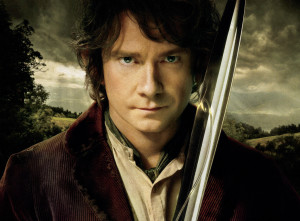
The undisputed blockbuster this past holiday season was the highly anticipated The Hobbit: An Unexpected Journey, the first part in Peter Jackson’s movie trilogy based off the book by the same name written by J. R. R. Tolkien.
While the film has merited an enormous box office success, (over $21 million so far), the film has met with a decidedly mixed reaction from professional critics. Scoring a mere 65 per cent on Rotten Tomatoes and an even lower 58 per cent on Metacritic, The Hobbit finds itself in similar company to another trilogy-first of this generation, Star Wars Episode I: The Phantom Menace. According to the current opinion held by many critics, Peter Jackson is poised to repeat George Lucas’ controversial exercise in storytelling, yet according to the movie-going public, this is not the case.
The Rotten Tomatoes summary, which is based on all of its critical reviews, summarizes The Hobbit as, “an earnest, visually resplendent trip, but the film’s deliberate pace robs the material of some of its majesty.”
The Phantom Menace fared equally bad in its summary: “Lucas needs to improve on the plot and character development, but there’s plenty of eye candy to behold,” read the review. Both reviews stress the films’ visual prowess but emphasize problems in the script. While The Hobbit may have a deliberate pace, is this a fair criticism? While it does render an experience significantly different from its source material, The Hobbit is a far more competently made film and stands well on its own merits.
There are several key areas where An Unexpected Journey and The Phantom Menace vary greatly. The essential difference, however, is in the strength of characters. In The Hobbit, Bilbo follows a clear path of character growth throughout and serves, as an outsider, to introduce the audience to the world of Middle-earth. There is no clear protagonist in The Phantom Menace, that burden is split four ways between the characters of Qui-Gon Jinn, Obi-Wan Kenobi, Anakin Skywalker and Padmé Amidala and none of them serve as a conduit to introduce the audience to George Lucas’ fantastical Star Wars world. This cripples the storytelling capabilities of The Phantom Menace to the point that you could start at Episode II without missing anything of real relevance to the trilogy’s plot. The Hobbit serves as the first part of a trilogy whereas The Phantom Menace comes off as the most expensive prologue ever made.
Much of the film’s criticisms centre on scenes that have little impact on the current film and were not present in the source material (The White Council, Radagast the Brown, Azog the Defiler). There is an entire subplot present in The Hobbit film trilogy which did not exist in the book. This may anger some book enthusiasts but really, it is hard to judge a beginning without knowing the middle and the end.
While critics are currently judging Jackson’s Hobbit harshly, fan support has been present. The Hobbit ranks far higher with user reviews on both Metacritic and Rotten Tomatoes as well as enjoying an 8.4 on IMDB. This differs greatly from fan reaction to The Phantom Menace. Proof that Peter Jackson may yet be doing more good than given credit for. As Gandalf states at the beginning of The Hobbit, “every good story deserves some embellishment.”




